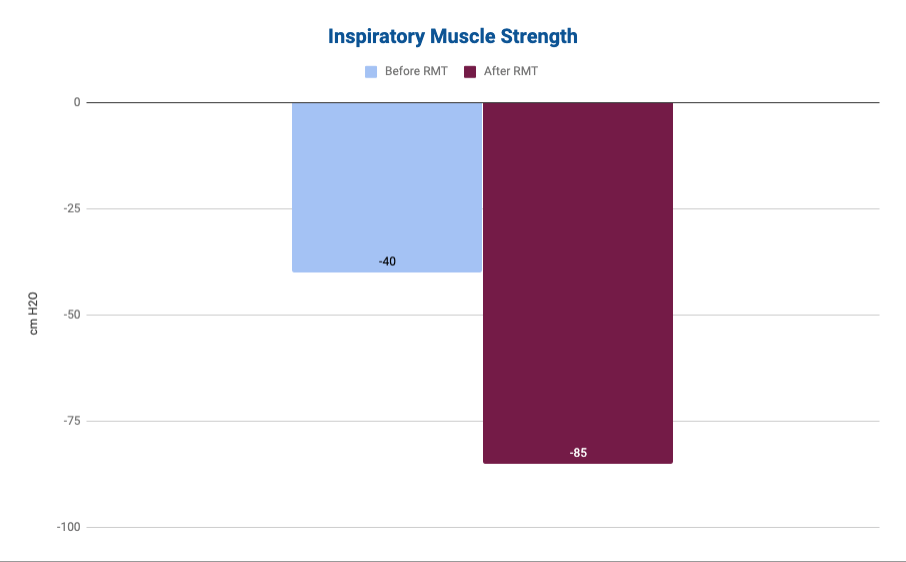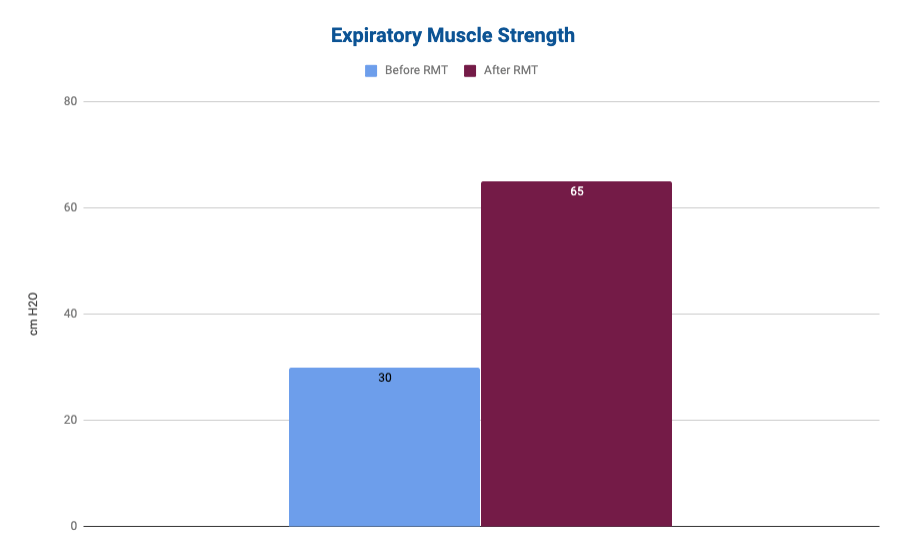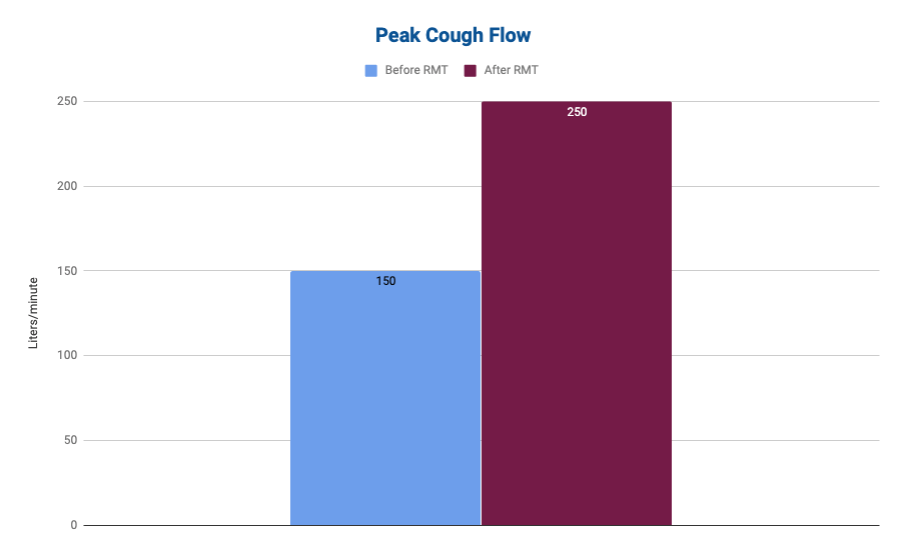CLINICAL CONTEXT AND KEY FINDINGS
- Spinal Cord Injury (SCI) often has a severe impact on breathing function.
- Impaired breathing function may lead to poor pulmonary hygiene and airway collapse.
- Respiratory complications are the most common cause of death in people with SCI.
- This article presents the case of a 50-year-old patient with SCI following a motorbike accident with difficulties in clearing secretions.
- Within 6 weeks of using the Breather, the patient significantly improved his respiratory muscle strength and cough effectiveness, reducing the risk of pulmonary infections and pneumonia.
- This case study confirms the efficacy of the Breather in improving respiratory muscle strength and cough function.
BACKGROUND
Spinal cord injury (SCI) is a traumatic event caused by damage to any part of the spinal cord or associated nerves. SCIs often occur secondary to motor vehicle accidents, falls from height, or due to combat injuries in armed forces. In the US, approximately 17,700 new cases of SCI are reported each year, with a 70% chance of paraplegia, and a 50% likelihood of losing motor and sensory function. SCI may lead to varying degrees of disability with a profound impact on personal and community life, employment, and quality of life [1,2].
The most common causes of death from SCI are respiratory complications and respiratory failure. Respiratory patterns are often disturbed in SCI, and many patients are not able to breathe deeply and cough forcefully. A decline in pulmonary function is often only detected as the impairment worsens, as pre-trauma data are typically not available. In the immediate phase after the SCI and spinal shock, the muscles below the injury go into flaccid paralysis. This may specifically affect respiratory muscles, making the chest wall unstable during inspiration and ventilation less effective, while increasing the work of breathing and contributing to airway collapse. Airway secretions may accumulate, and reduced cough effectiveness reduces the ability to expectorate secretions, increasing the risk of chest infections, pneumonia, and atelectasis. Impaired diaphragm function further contributes to ineffective ventilation and pulmonary hygiene. Intubation and mechanical ventilation are often a necessary consequence [1].
Strengthening the respiratory muscles by specific respiratory muscle training (RMT) has proven effective in increasing respiratory muscle strength, endurance, and function, and may improve lung volumes [3,4].
CASE STUDY: 50-YEAR-OLD PATIENT WITH SCI FOLLOWING MOTORBIKE ACCIDENT PRESENTS WITH IMPAIRED COUGH FUNCTION
A recent case study published in the International Journal of Multidisciplinary Research investigated the use of RMT using the Breather on pulmonary function in a 50-year-old patient with SCI and quadriparesis (muscle weakness in limbs) following a motorbike accident. The patient presented with respiratory muscle weakness and complained of difficulties in clearing secretions during coughing. The patient was instructed on how to use the Breather and the technique of diaphragmatic breathing. In a semi-reclined position, the patient performed 2 sets of 10 breaths, twice a day, on 5 days per week. RMT intensity was adjusted according to his maximum inspiratory and expiratory pressures.
RMT USING THE BREATHER IMPROVES RESPIRATORY MUSCLE STRENGTH AND COUGH EFFECTIVENESS
The patient’s lung function was assessed after 6 weeks of RMT using the Breather. The assessment showed that the patient’s maximum inspiratory strength had improved by 113%, and his expiratory strength by 117%. The patient’s peak cough flow had improved by 67% [5].



CONCLUSION
By improving respiratory muscle strength and cough effectiveness, the Breather can actively contribute to better airway clearance, and pulmonary hygiene, thereby reducing the risk of chest infections, pneumonia, pulmonary complications, and mortality after SCI.
References
-
Berlowitz DJ, Wadsworth B, Ross J. Respiratory problems and management in people with spinal cord injury. Breathe (Sheff). 2016;12: 328–340.
-
Spinal Cord Injury (SCI) 2016 Facts and Figures at a Glance. J Spinal Cord Med. 2016;39: 493–494.
-
Berlowitz DJ, Tamplin J. Respiratory muscle training for cervical spinal cord injury. Cochrane Database Syst Rev. 2013; CD008507.
-
Tamplin J, Berlowitz DJ. A systematic review and meta-analysis of the effects of respiratory muscle training on pulmonary function in tetraplegia. Spinal Cord. 2014;52: 175–180.
-
Shaikh S, Gunjal S. EFFECTIVENESS OF BREATHER DEVICE IN CERVICAL SPINAL CORD INJURY- A CASE REPORT. EPRA International Journal of Multidisciplinary Research. 2019;5: 191–193.

0 Comments